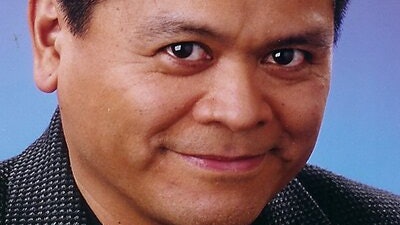No one knew what would happen after the Supreme Court took away affirmative action from higher ed’s diversity tool kit, essentially making admissions as color blind as it can be.
But now that the first Harvard class has been admitted since the SCOTUS decision, we are in a strange place that should have been expected.
No one knows exactly where we stand on the most important matters of racial equity. That’s what happens when you buy into the colorblind fantasy. Instead of fairness, we have diversity as a great accident, if it can be achieved at all.  Emil Guillermo
Emil Guillermo
Data is not publicly reported by the school. It’s not in a document that can be discoverable in court, or that would make a school liable of violating the law.
It’s just not mentioned or reported anywhere officially by Harvard.
This is what the colorblind wanted, of course. To take away equity paths for people of color and leave us all in the dark.
The numbers released last week merely say that 1,245 applicants gained admission on last Thursday to next fall’s freshman class. Add the 692 early admissions from December and the grand total is 1,937 members of new class. That’s out of 54, 008 applicants which puts Harvard at a 3.6 percent admission rate.
Harvard’s still exclusive, but not as exclusive as other Ivies that saw its applications soar. At Harvard, the number of applicants fell from 56,937 from the year before, a drop of 5.1 percent from the previous year. And when compared to two years ago, the drop is 11.8 percent, indicating perhaps a decline in interest in Harvard.
Was that because of the Students for Fair Admissions lawsuit? Or maybe it’s because of other factors that have come into play since the Supreme Court decision putting an end affirmative action.
Without the data, it’s hard to tell anything definitively. For example, no one can say if the numbers of Asian students are above the high 30 percent level like at some of the University of California schools. Nor can it be said if the number of Asian students has dropped.
And what of other groups, white, Black, and Hispanic? No one can say if the numbers of Black and Hispanic acceptances rose or declined. Or if the lack of affirmative action efforts kept down the number of Black and Hispanic applicants.
One thing that’s come up since the SCOTUS ruling and that’s the treatment by the school of its first Black president, Dr. Claudine Gay and the controversy over how the school dealt with the Hamas attack on Israel. That could have impacted applications from both Jews concerned about antisemitism, or Pro-Palestinian peoples concerned about their place in the Harvard community.
All interesting questions but academic as well. And this is what the enemies of affirmative action wanted. When they successfully ended race-based admissions it put us back to where things were in the late 1960s and early 1970s-- at the start of the move toward equity, without a reasonable way of how to target the problem.
Sure, Harvard has class and gender information. Harvard’s incoming class has 20.7 percent who have qualified for federal Pell grants for low-income students. And there are 20.5 percent who are first generation college students. We also know that 53.1 percent are women, 46.9 percent are men.
But we don’t know much when it comes to race. We are now blessed with an ignorance that has eliminated the race problem because how can you fix a problem that you can’t say exists? And because we’re blind to race, we are unable to effectively target groups that need help. That’s what happens when you can’t identify them by law. So large groups go unaided, but we have left affirmative action intact for the group that needs it the least--whites with legacy ties as alumni and/or donors.
It’s hard not to be mournful of where we could have been in terms of diversity if we hadn’t wasted years on the lawsuit filed by the Students for Fair Admissions, who were used by anti-civil rights careerists all opposed to affirmative action policies. Just think of our progress if we were all honestly focused on creating the equity we desire in higher ed and in our country.
The admission numbers at Harvard remind us that the lawsuit wasn’t about education or fairness, it was simply a political exercise in response to the country’s rise in numbers of people of color, and the decline of whites.
How do you do you fix that? Anti-affirmative action advocates knew that by going colorblind it favors whites. And now anything that happens in terms of diversity is a happy accident. The new Harvard numbers only proves that the SCOTUS ruling has only left us further than ever from where we want to be in an inclusive and diverse America.
Emil Guillermo is a journalist, commentator, and former adjunct professor who writes about education, race and politics. You can learn more at www.amok.com



















